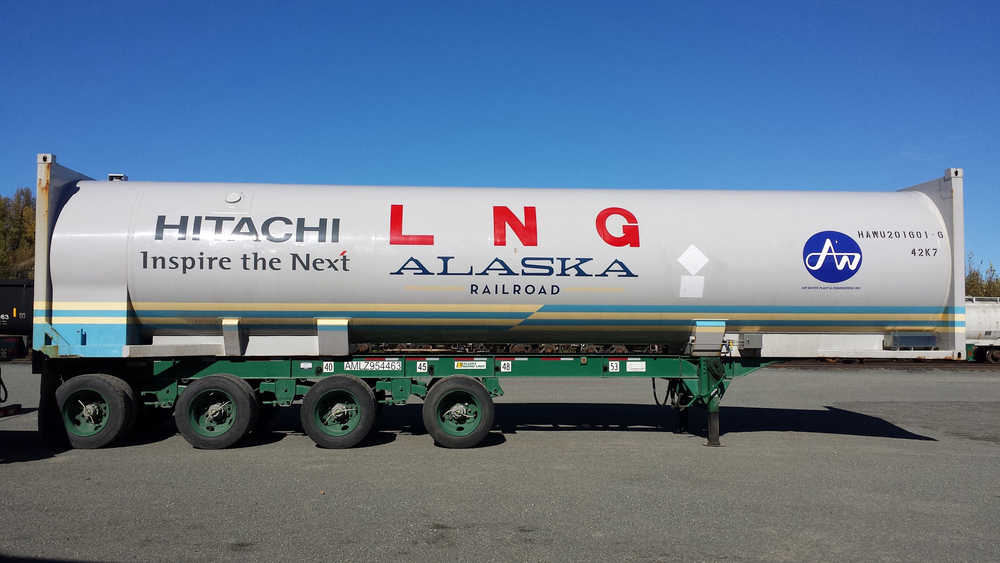ANCHORAGE — The Alaska Railroad is making final preparations for the first U.S. rail shipments of liquefied natural gas, a fuel that could be used to alleviate air pollution problems in the state’s second-largest city.
The railroad Tuesday will send two loaded 40-foot LNG containers from Anchorage to Fairbanks as part of a demonstration. Seven more round-trips over four weeks will follow, said Tim Sullivan, manager of external affairs.
“We’re going to take the information that we get in terms of our efficiencies, the logistics of moving this stuff, find out where we can improve, what we can improve, and the things we can’t improve, and start making decisions as to whether we can make this a line of business,” he said.
It will also depend on whether Fairbanks Natural Gas LLC, a company providing Cook Inlet natural gas to about 1,000 customers in Fairbanks, will want to use the railroad as a shipper.
Expansion of natural gas use is a longtime hope of Fairbanks residents looking for a cheaper alternative to fuel oil to heat homes.
Natural gas also is part of a state plan to clean up some of the worst winter air pollution in the country. The Fairbanks area regularly exceeds allowable federal fine particulate levels. Microscopic particulate inhaled deep in the lungs is linked to heart attacks, decreased lung function and premature death in people with heart or lung diseases.
Particulate is emitted by cars and coal-fired heating systems but especially by wood stoves, which some in Fairbanks use as an alternative heat source to fuel oil.
A pipeline carrying North Slope natural gas past Fairbanks for shipment to out-of-state markets has been an unfulfilled dream for Alaska for decades. In the absence of a pipeline in the petroleum-rich state, Fairbanks Natural Gas moves LNG by truck.
Alaska Railroad workers this week are offering LNG safety training to emergency responders in Anchorage, Wasilla and Fairbanks. The railroad on Friday will send cars north with empty containers takes to demonstrate the equipment.
The two 40-foot containers are on loan from Hitachi High-Tech AW Cryo, one of several tank-makers interested in Alaska’s LNG market, according to the railroad. LNG is shipped regularly in Japan and Europe.
“LNG is considered to be a lower risk hazardous material than other petroleum products that are moved,” Sullivan said.
Planning and applying for a Federal Rail Administration permit was a task that covered several years, Sullivan said.
“We had to put in quite an application to do so,” Sullivan said. “I believe it stood several feet tall.”
The FRA in October issued a two-year permit that runs through December 2017. It authorizes three roundtrip trains per week. Each could carry 12 tanks per train. That’s beyond the current need in Fairbanks, Sullivan said.
The containers can carry up to 7,024 gallons or 27,546 pounds of LNG chilled to minus 260 degrees. After unloading at the Fairbanks rail yard, the containers will be driven 4.5 miles to the Fairbanks Natural Gas storage facility.
Lois Epstein, a licensed engineer who works as Arctic program director for The Wilderness Society in Anchorage, said Tuesday she has concerns about safety where trains carrying LNG cross roads.
“I think that’s one of the weak links,” she said, and the state-owned railroad may want to consider additional overpasses.

